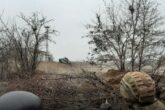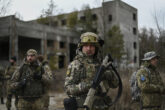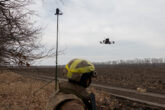April 21, 2017
Below Glideslope: The MQ-25 Stingray Appears to be Heading for a Ramp Strike
Even as reports surface of American supercarriers and their embarked air-wings hurriedly steaming towards the Korean peninsula, the saga of the Navy’s carrier based unmanned aircraft program seems to have taken yet another turn for the worse. Instead of adhering to direction by both the Chief of Naval Operations (CNO) and the Deputy Secretary of Defense to maximize the strike range of the carrier air wing it appears that naval aviation leadership is placing its finger on the MQ-25 design scale and prioritizing unrefueled endurance for the intelligence/surveillance/reconnaissance (ISR) mission at the expense of great fuel offload for long-range mission tanking.
During recent discussions naval aviation leaders stated that the threshold requirements for the as yet un-designed MQ-25 would include the ability to remain airborne for 12 hours in order to perform overnight ISR missions while the carrier deck is shut down. This requirement for MQ-25 to “bridge the night” is a “cut and paste” from the Unmanned Carrier Launched Surveillance and Strike (UCLASS) program requirement, which was canceled after a review of Joint ISR capabilities concluded that a carrier-based ISR aircraft wasn’t necessary. The problem for MQ-25? Designing an aircraft to fly 12 hoursunrefueled negatively impacts its ability to carry large fuel (or other) payloads over long distances. During UCLASS, the ISR endurance requirement came at the expense of internal weapons payload. On MQ-25, the 12-hour requirement applies a “tax” on the aircraft’s long-range refueling capacity.
Read the full article at The National Interest.
More from CNAS
-
Defense / Transatlantic Security
When Defense Becomes Destruction: Austria-Hungary’s Mistake and Ukraine’s RiskThis article was originally posted on War on the Rocks. The southeastern Polish city of Przemyśl, with its elegant 19th century Habsburg-era train station, remains one of the ...
By Franz-Stefan Gady
-
Defense / Transatlantic Security
Ukraine’s Catch-22 MomentThis article was originally published in the Financial Times. In Joseph Heller’s wartime classic, Catch-22, the protagonist Yossarian seeks out the US army surgeon Doc Daneeka...
By Franz-Stefan Gady
-
CNAS Insights | Budgetary Own Goals Undermine “Speed and Volume”
On November 7, Secretary of Defense Pete Hegseth laid out a plan to overhaul the Department of Defense’s (DOD’s) acquisition system. Placing an emphasis on delivering new capa...
By Philip Sheers, Carlton Haelig & Stacie Pettyjohn
-
Drones: Who Is Making the New Weapons of War?
From Ukraine and Russia to Gaza and Sudan, drones have become a key weapon of war. Which companies are making them, and profiting from this rapidly expanding but controversial...
By Stacie Pettyjohn




